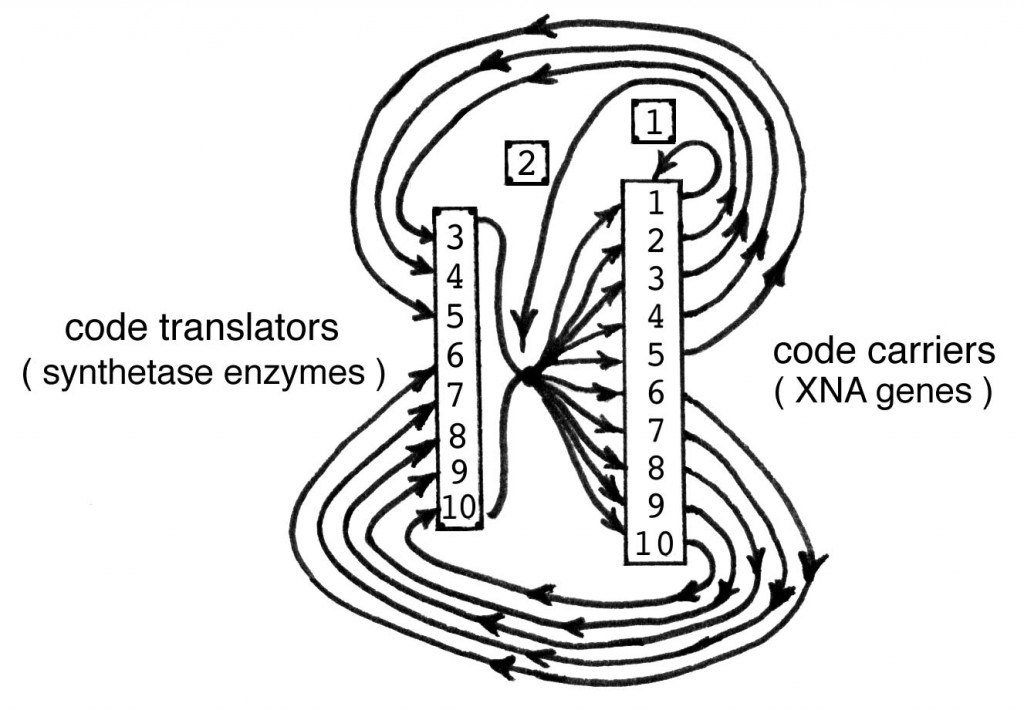Journal Keynote Paper
by Paul A. LaViolette
The Starburst Foundation
Journal of Biological Systems 22(03): 393
September, 2014
Abstract
Systems concepts are applied to solve the problem of how early life could have emerged from an initially abiotic organic environment. Proteinoid or lipid microspheres are proposed to have polymerized from a primordial organic soup and to contain various amino acids and several different nucleobases. A self-replicating “basic set” hypercycle consisting of 10 XNA gene strands and 10 enzymes is proposed that utilizes inorganic phosphates as an energy source. The genes would utilize triplet combinations of adenosine and uracil to code for a replicase enzyme, a polymerase enzyme, and eight code translator (synthetase) enzymes. It is shown that there is a high probability that the basic set genes would emerge. Fissioning of the basic set microspheres into a population of microspheres all containing the basic set, could eliminate the problem of a single gene monopolizing use of the replicator enzyme at the expense of the others and greatly enhance the survivability of the replicating population as a whole. A thermodynamic analysis of such a self-replicating system is also presented. It is shown that genetic mutations will in the long-run allow the basic set to evolve to increased diversity, higher rates of enzyme synthesis, and greater rates of entropy production. Long-term evolution could have resulted in organisms similar to contemporary bacteria that utilize RNA genes with a four nucleobase codon system.
Paper Download: Prebiotic.pdf (File size: 0.6 MB)
copyright 2014, P. LaViolette
